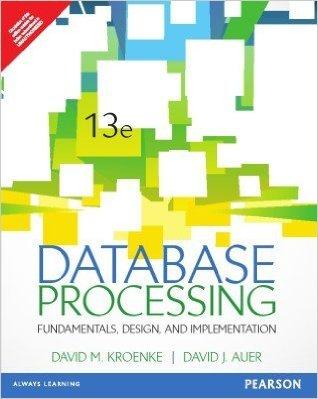Question
An asymmetric cryptosystem for cybersecurity Introduction: Asymmetric cryptosystems are essential for cybersecurity in todays internet age. An asymmetric cryptosystem consists of a public key available
An asymmetric cryptosystem for cybersecurity Introduction: Asymmetric cryptosystems are essential for cybersecurity in todays internet age. An asymmetric cryptosystem consists of a public key available for anyone to encrypt a message. However, it requires the private key to decrypt the ciphered text. To ensure security, it is computationally hard to find the private key from a provided public key. In this project, you need to develop a prototype of RSA with simple applications. Project requirements: This is a group project. You should work in a group of 3 people in this class. Your software solution should be able to perform the following tasks securely: Generate both public and private keys by the owner; Encrypt a text message for anyone with the public key; Decrypt the ciphered message by whom with the private key; Generate a digital signature for the owner; and Authenticate the originality of a digital signature for these with the public key. Project objective: Through this project, you should be able to Analyze the requirements of an asymmetric cryptosystem and specify the I/O; Identify mathematical and algorithmic solutions to meet the requirements effectively and efficiently; Design an integrated prototype of RSA cryptosystem that can carry out each of the above tasks, and produce expected output from specified input; Implement the design into a software solution effectively with a commonly available integrated development environment (IDLE) in a professional manner; Verify that the implementation meets all objectives of the design; and Gain collaborative learning and working experience as a member or leader in a group through effective communication and collaboration. Problem analysis and algorithm identification: To meet the above requirements and objectives, you need to answer each of the following sub-problems and identify effective and efficient algorithmic solutions: 1. What do you need to start with generating keys of RSA? What are the requirements of the seeds (p and q)? How do you meet the requirements? 2. With the seeds p and q, how do you generate a public key? What is the mathematical requirement of a public key? What is the most efficient available algorithm to ensure the requirement? 3. How do you encrypt a message with RSA public key? What is the most efficient algorithm to carry out the task? 4. To decrypt a message ciphered with a RSA public key, you need the private key. What is mathematical requirements for the private key? What is the most efficient algorithm available to find the private key? 5. How do you decipher a cyphered text with the private key? What is the most efficient algorithm available to carry out the operation? 6. Which RSA key should you use to sign a document digitally? How do you sign it? 7. What do you need to verify a digital signature? How do you authenticate it? NOTE: This project is only a prototype. One-way hashing fingerprints is not required. Design your software solution: After selecting algorithms to meet specified requirements on each of the above subtasks, you should design your software solution prior to implementation. Design functional units: It is suggested to design software solution for each subtask as a functional unit with specified I/O. (An input of a function can be an output of another functional unit. In other words, it is not necessarily from keyboard.) For instance, an interactive user menu can be a unit for a user to select a specific task to perform. Key generation can be another functional unit. Solution integration: Assemble functional units in a flowchart as an integrated software solution. Backend and frontend design: The project involves both backend and frontend. While the backend carries out RSA related operations, the frontend takes care if interactive I/O between a user and the system for specified applications. Software implementation: Python 3 is strongly recommended for its simplicity. You may use any code scripts introduced in this course with proper documentation to demonstrate your understanding. However, direct copy of any RSA implementation is prohibited because that defeats the purpose of this project. Testing: To ensure your implementation meets the requirements, you should well test your implemented software. This includes: Unit test: to verify if each unit carries out the design objective correctly. You may use small prime numbers as seeds in unit tests when need hand calculated verification; Integration test: to check if your implementation meets the specified project requirements fully. Large prime numbers should be used in integration test. The user interface during integration test can be as the following: 1. Ask the user to identify if he/she is a general public user, or the owner of the keys. 2. If he/she is a public user, then he/she only has access to the public key. Apply the public key, he/she may a. Encrypt a message with the public key, and make the cyphered text for the owner to decipher it; or b. Authenticate the digital signature. 3. Otherwise, the owner has both public and private keys. With them, the user may a. Decipher the ciphered text from a public user; or b. Generate a digital signature and make it available to others to verify. 4. The software implementation should carry out the user selected function correctly. After completing the task, the software should ask if the user has another task. The program exits only when the user decides to quit.
Step by Step Solution
There are 3 Steps involved in it
Step: 1

Get Instant Access to Expert-Tailored Solutions
See step-by-step solutions with expert insights and AI powered tools for academic success
Step: 2

Step: 3

Ace Your Homework with AI
Get the answers you need in no time with our AI-driven, step-by-step assistance
Get Started


